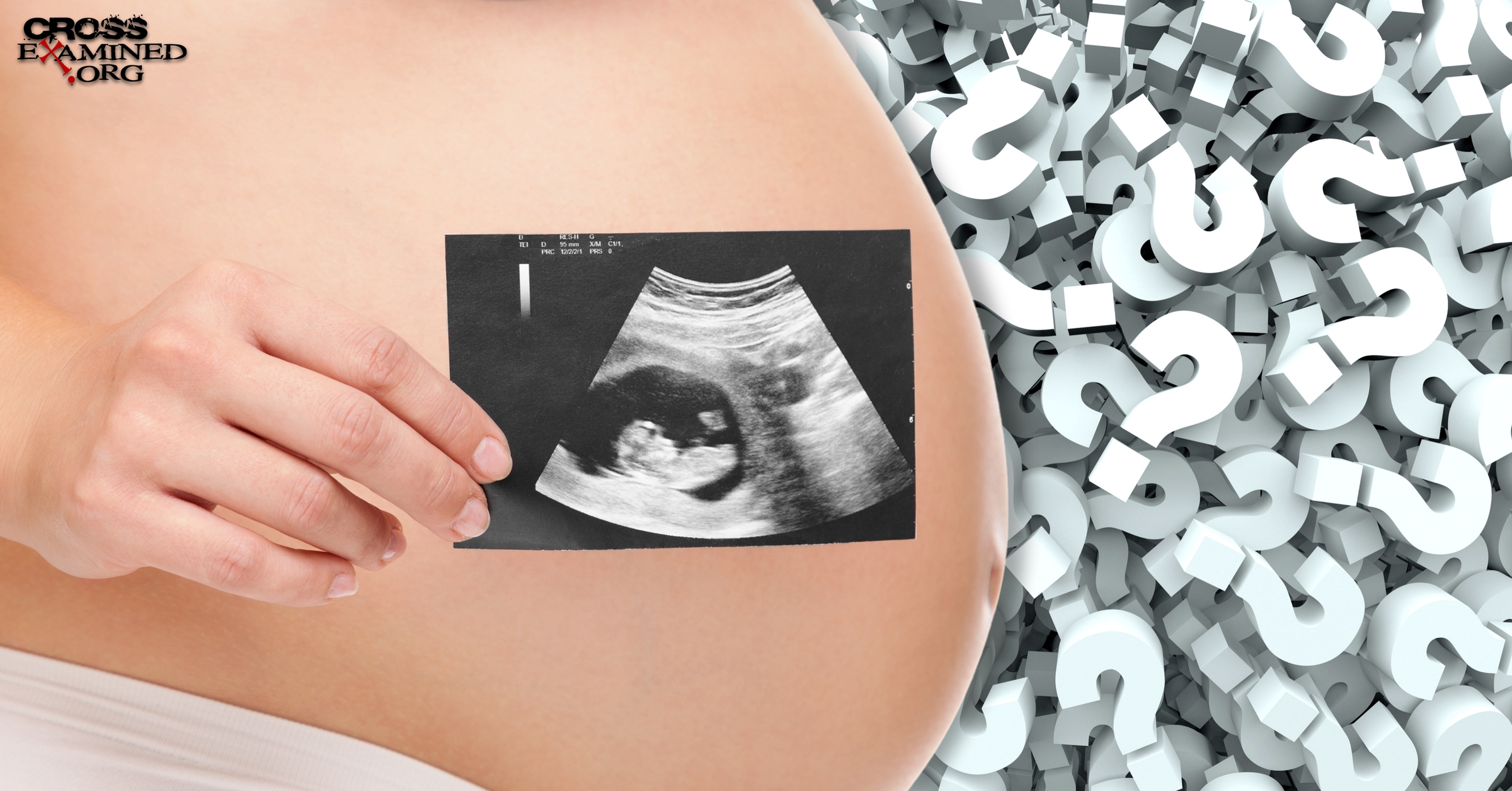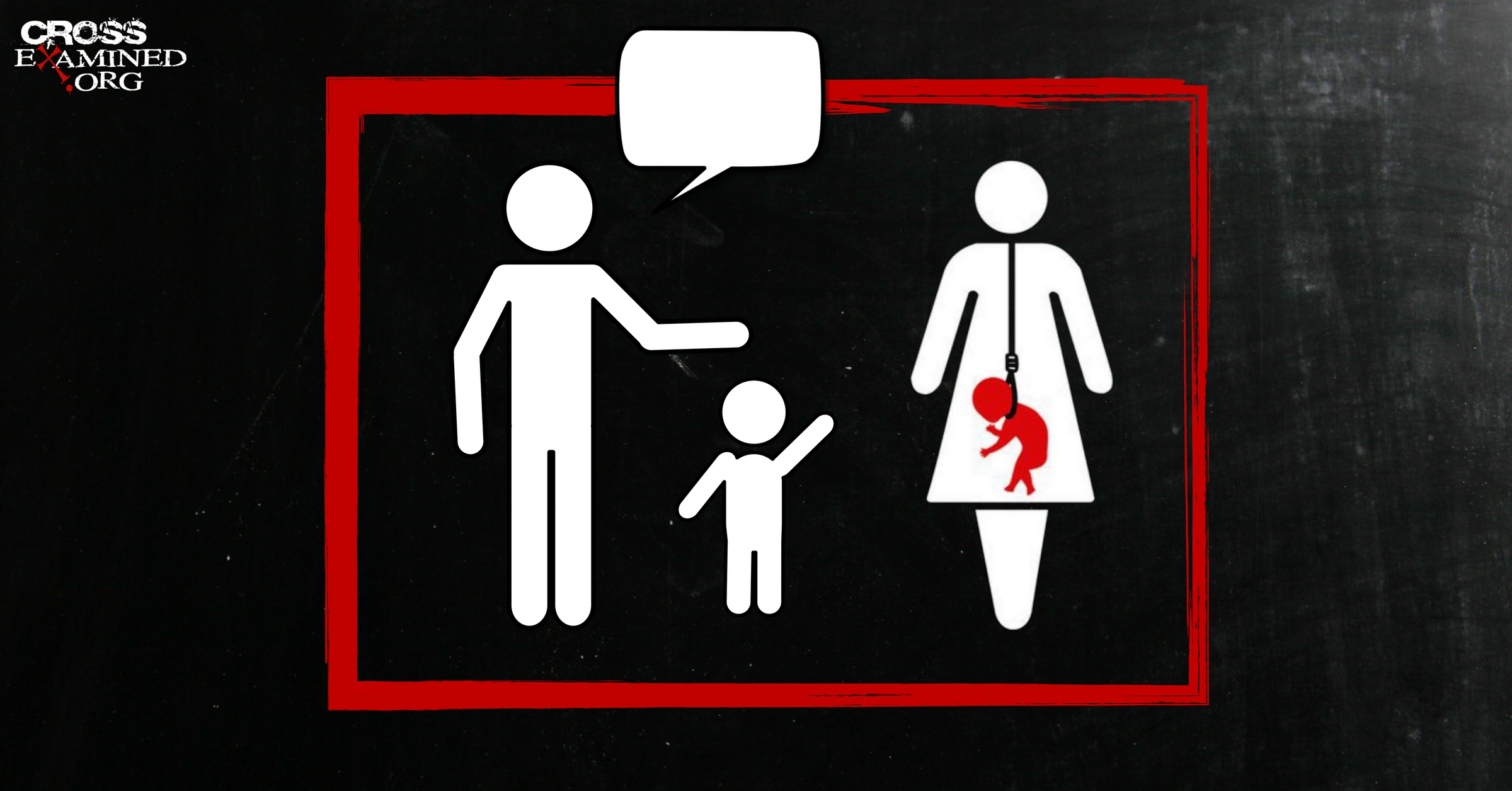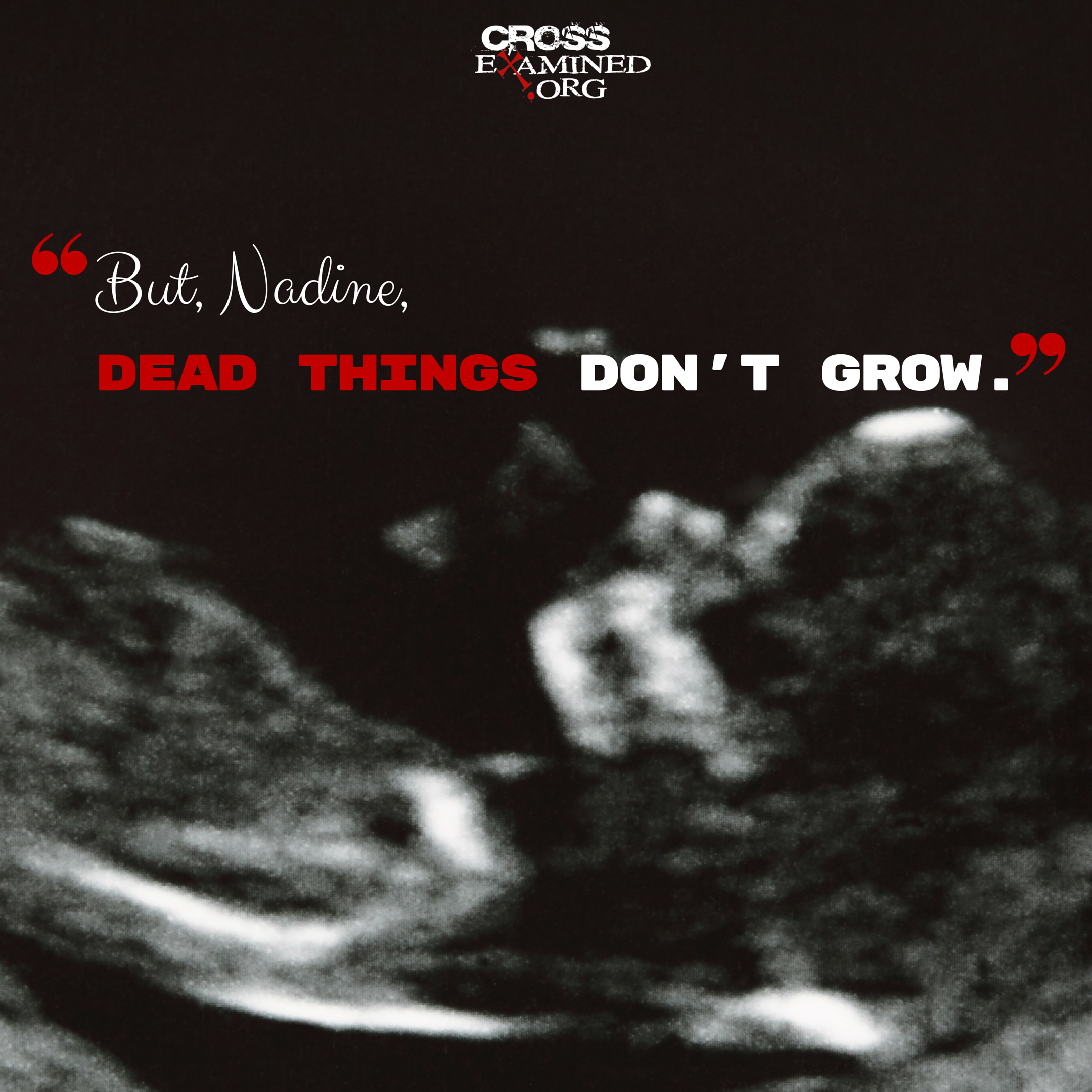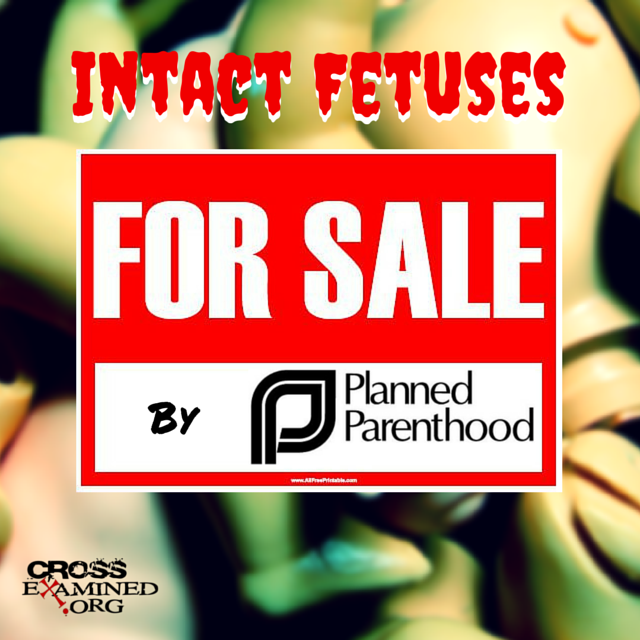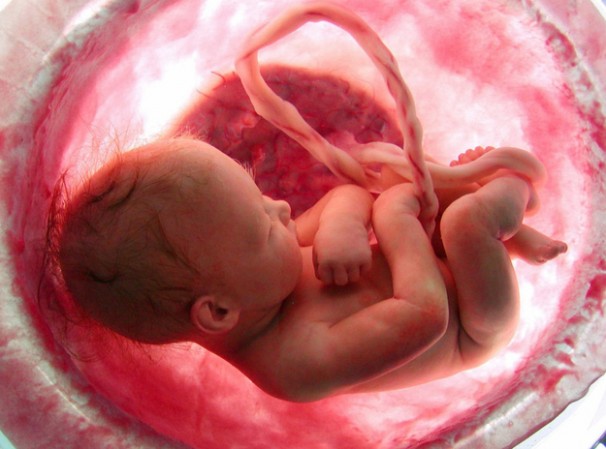By Clinton Wilcox
Before you can even answer the question of whether or not abortion is moral, you must first decide what the unborn is. For as Greg Koukl of Stand to Reason observes, if the unborn is not human, then no justification for abortion is necessary. It would be no different from having a mole removed or a tooth pulled. But if the unborn is human, then no justification for abortion is adequate.
If it’s true that no one can tell when human life begins, then the benefit of the doubt should go to life. We should not be aborting the unborn because there’s a chance we could be aborting living human entities. If a hunter hears a rustling in the woods, does he shoot right away or does he make sure the rustling wasn’t caused by another human? Unless he’s Dick Cheney, he’s going to make sure it’s a deer he’s aiming at and not a human. Or if you’re driving down a road in the dark and you see the outline of something that may be a child or may simply be the shadow of a tree, do you drive into it or do you slow down? Or if you’re about to blow up a condemned building and you’re not sure if someone’s inside, do you blow it up anyway or send someone in to make sure?
However, it’s not true that no one can tell when human life begins. We can actually make the pro-life case in ten seconds or less: The unborn are alive because they grow, they are human because they have human parents, and living humans like you and me are valuable, aren’t they?
The unborn from fertilization are alive because they grow. They also exhibit other forms of life, such as cell division, metabolism, and response to stimuli. In fact, the only thing the unborn need to survive are adequate nutrition, a proper environment, and an absence of fatal threats. That’s all any of us need. There is no point in human development at which the developing entity goes from non-life to living.
The unborn are also human from fertilization. We know that everything reproduces after its own kind; dogs have dogs, cats have cats, and humans have humans. They have separate human DNA from, and often a different blood type than, the mother. A white human embryo can be created in a petri dish, implanted into a black mother, and be born white. In fact, if the unborn organism were simply a “part of the mother’s body,” then the pregnant woman would have four arms, four legs, two heads, four eyes, two noses, and roughly half the time male reproductive organs. But this is absurd. At no time during human development does the unborn ever go from “non-human” to human.
Some people think of the unborn entity as being constructed in utero, like a car. In fact, this probably accounts for why many people think pro-life advocates are so ridiculous, because they have a wrong view of what development in utero is. With a car, you have all the parts in front of you. They do not make a car on their own. It requires an outside builder to put all the pieces together into what we understand is a car. A car is not present from the beginning, because the parts that make a car can be used in the construction of something else (such as a boat or a plane).
However, the unborn’s development is different. It directs its own development from within. It does not have an outside builder, it directs its own internal growth and maturation, and this entails continuity of being. Professor Richard Stith illustrates the difference with the following analogy:
“Suppose we are back in the pre-digital photo days, and you have a Polaroid camera and you have taken a picture that you think is unique and valuable — let’s say a picture of a jaguar darting out from a Mexican jungle. The jaguar has now disappeared, so you are never going to get that picture again in your life, and you really care about it. (I am trying to make this example comparable to a human being, for we say that every human being is uniquely valuable.) You pull the tab out and as you are waiting for it to develop, I grab it away from you and rip it open, thus destroying it. When you get really angry at me, I say blithely, ‘You’re crazy. That was just a brown smudge. I cannot fathom why anyone would care about brown smudges.’ Wouldn’t you think that I were the insane one? Your photo was already there. We just couldn’t see it yet.” [1]
As pro-life philosopher Scott Klusendorf notes, “The science of embryology is clear. From the earliest stages of development, the unborn are distinct, living, and whole human beings. Therefore, every ‘successful’ abortion ends the life of a living human being.” [2]
Embryologists, who are the experts in the field on human embryos, consistently agree that the unborn are alive and human from fertilization. Consider the following from the most-used textbooks on the issue:
“Although life is a continuous process, fertilization (which, incidentally, is not a ‘moment’) is a critical landmark because, under ordinary circumstances, a new genetically distinct human organism is formed when the chromosomes of the male and female pronuclei blend in the oocyte.” [3]
“A zygote is the beginning of a new human being (i.e., an embryo).” [4]
There are many more examples I could give. In short, you didn’t come from an embryo, you once were an embryo. Sophisticated pro-choice philosophers also know that human life begins at fertilization.
“It is possible to give ‘human being’ a precise meaning. We can use it as equivalent to ‘member of the species Homo Sapiens.’ Whether a being is a member of a given species is something that can be determined scientifically, by an examination of the nature of the chromosomes in the cells of living organisms. In this sense there is no doubt that from the first moments of its existence an embryo conceived from human sperm and eggs is a human being.” [5]
“Perhaps the most straightforward relation between you and me on the one hand and every human fetus on the other is this: All are living members of the same species, Homo Sapiens. A human fetus after all is simply a human being at a very early stage in his or her development.” [6]
In fact, Alan Guttmacher, former president of Planned Parenthood, in 1933 (a full forty years before Roe v. Wade was passed), wrote:
“This all seems so simple and evident that it is difficult to picture a time when it wasn’t part of the common knowledge.” [7]
The facts of science are clear: human life begins at fertilization.
Objections
There are certain objections which are raised against the life and humanity of the unborn.
1) Human life doesn’t begin at fertilization, it began tens of thousands of years ago.
This is a rather bizarre objection. I’m including it here because I’ve now heard it twice. It’s simply semantic nonsense. A new, unique, genetically distinct human being is created at fertilization (as is attested by the science of embryology). In fact, the quote by O’Rahilly and Muller even attest to the fact that life is a continuous process. However, fertilization is that critical landmark that establishes the creation of a new, gentically distinct human organism.
2) Skin cells/hair follicles/sperm and eggs are human.
A pro-choice advocate who claims that zygotes/embryos/fetuses don’t have a right to life because we would have to give a right to life to cells, sperm, eggs, etc., because they are also human make the elementary mistake of confusing parts with wholes. The embryo from fertilization is a unique entity that directs its own development from within. Left alone, a skin cell will not develop into a mature human, but that’s exactly what a zygote will do. All of the embryo’s parts work together for the good (survival) of the whole organism.
Once the sperm and egg unite, they cease to exist and a brand new human organism exists. It makes no sense to say you were once a sperm or somatic cell. It makes complete sense to say you were once an embryo. The sperm and egg merely contribute genetic material to the creation of a new human organism.
3) Freezing/Twinning/Recombining
A pro-choice advocate I debated with once claimed that you can’t freeze an adult human, but you can freeze an embryo and it will come back to life, so the embryo cannot be human. This is faulty reasoning. First, embryos can only be frozen up to seven days after fertilization, but the embryonic stage lasts up to three months. After that, it is a fetus. But embryo and fetus are just stages of human development, like infant, toddler, adolescent, teenager, adult, and elderly.
Second, even though a very early embryo can survive the freezing process, it doesn’t follow that they are not human. This just means that early embryos can do one more thing that more mature humans can’t (they can also survive without a heart or a brain).
When it comes to twinning, this also doesn’t follow that just because some embryos twin, that there wasn’t one whole human organism before that. As Patrick Lee points out, “if we cut a flatworm in half, we get two flatworms.” [8] However, can you seriously argue that prior to the split, there wasn’t one distinct flatworm? Also, admittedly, we aren’t entirely sure what happens during twinning. Does the original organism die and give rise to two new organisms, or does the original survive and engage in some sort of asexual reproduction? Either way, it does not call into question the fact that there was one distinct organism prior to the splitting.
By the same token, it doesn’t follow that if one twin re-absorbs the other that there wasn’t one living human organism, then two separate organisms, then one living human organism again.
4) Not all products of conception are human and won’t develop into them, and not all human beings may result from conception.
Dr. Bernard Nathanson distinguishes three types of nonhuman entities that result from a union of sperm and egg: the hydatidiform mole (“an entity which is usually just a degenerated placenta and typically has a random number of chromosomes”), the choriocarcinoma (“a conception-cancer resulting from the sperm-egg union is one of gynecology’s most malignant tumors”), and the “blighted ovum” (“a conception with the forty-six chromosomes but which is only a placenta, lacks an embryonic plate, and is always aborted naturally after implantations”). [9]
Here, Dr. Nathanson confuses necessary and sufficient conditions. The sperm-egg union is a necessary condition for conception of a human, not a sufficient one. Not everything that arises from the sperm-egg union is a human conception, but a sperm-egg union is necessary for conception of a human.
Conversely, human clones arise without the benefit of conception. Just as the sperm-egg union is a necessary condition for conception and not a sufficient condition, conception itself is a sufficient condition for a human being to come into existence, not a necessary one. [10]
5) Miscarriages.
People often point to the high number of miscarriages that occur (many of which are flushed out of the woman’s body). However, how does it follow that just because the woman’s body may miscarry, that the unborn isn’t human? How does it follow that because nature spontaneously aborts unborn humans that we may deliberately kill them? People die of natural causes, but that does not justify murder. Natural disasters (e.g. tornadoes and earthquakes) kill many people at once, but this does not justify bombing cities.
Also, it should be noted that 100% of all humans conceived die. Whether you die as an embryo, a fetus, a teenager, or an adult, why would that affect your status as a human being?
Original Blog Source: http://bit.ly/2lzyh8U
[1] Richard Stith, “Does Making Babies Make Sense? Why So Many People Find it Difficult to See Humanity in a Developing Foetus,” Mercatornet, September 2, 2008.
[2] Scott Klusendorf, The Case for Life, Crossway Books, 2009, p. 35.
[3] Ronan O’Rahilly and Fabiola Muller, Human Embryology and Teratology, 3rd ed., New York: Wiley-Liss, 2001, p.8
[4] Keith L. Moore, The Developing Human: Clinically Oriented Embryology, 7th ed., Philadelphia, PA: Saunders, 2003, p.2
[5] Peter Singer, Practical Ethics, 2nd ed. (Cambridge: Cambridge University Press, 1993), pp.85-86.
[6] David Boonin, A Defense of Abortion, (Cambridge University Press, Cambridge, 2003), p. 20.
[7] Alan Guttmacher, Life in the Making: The Story of Human Procreation, New York: Viking Press, 1933, p. 3.
[8] Patrick Lee, Abortion and Unborn Human Life (Washington, D.C.: Catholic University Press in America, 1996), p. 93.
[9] Bernard Nathanson, Aborting America, (New York: Doubleday, 1979), p. 214, as cited in Francis Beckwith, Defending Life: A Moral and Legal Case Against Abortion Choice (Cambridge University Press: Cambridge, New York, 2007), p. 74.
[10] Paraphrased from Francis Beckwith, Defending Life: A moral and Legal Case Against Abortion Choice, pp. 74-75.

